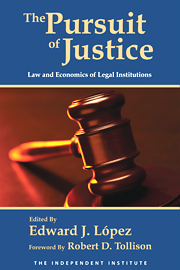Over the past year there has been a flurry of government-related activity aimed at stopping the decline of the newspaper business. The Federal Trade Commission (FTC) has held three series of workshops on the subject, drawing dozens of top academics, national politicians, business leaders from companies like Google and News Corporation, and the FTC commissioners themselves. On June 7 the agency released a discussion paper titled “Potential Policy Recommendations to Support the Reinvention of Journalism,” and a week later it held a workshop at the National Press Club, “How Will Journalism Survive?” to discuss its proposals.
This activity has focused on the fact that traditional news-producing businesses aren’t making the money they used to make because of competition from new kinds of outlets.
This, allegedly, is a market failure.
Print journalism lost income to television, then the Internet, and now from the expanding capabilities of mobile handsets. In this new and still rapidly evolving order, print news media are increasingly discovering they are at a comparative disadvantage in attracting advertising dollars. Like dial-up Internet access, the newspaper is getting left behind.
But is this a market failure? The FTC argues that journalism is a public good, that the severe contraction of the industry proves that the market has failed, and thus that even tirelessly experimenting entrepreneurs have been unable to find new and sustainable streams of revenues for news organizations, especially for traditional newspapers and their online extensions. As paragraphs 14 and 15 of the FTC paper argue:
14. There are reasons for concern that experimentation may not produce a robust and sustainable business model for commercial journalism. History in the United States shows that readers of the news have never paid anywhere close to the full cost of providing the news. Rather, journalism always has been subsidized to a large extent by, for example, the federal government, political parties, or advertising.
15. Economics provides insight into why this has been the case. The news is a “public good” in economic terms. That is, it is non-rivalrous (one person’s consumption of the news does not preclude another person’s consumption of the same news) and non-excludable (once the news producer supplies anyone, it cannot exclude anyone). Because free riding is usually easy in these circumstances, it is often difficult to ensure that producers of public goods are appropriately compensated.
The policy recommendations, in turn, are intended to raise revenues and decrease costs to news-producing organizations, while making life more difficult for online news aggregators and other new media “free riders.”
Major New Programs
By my count the FTC report contains 30 potential policy proposals, ranging from major new programs to tweaks of existing interventions. I have categorized most of the proposals into six broad areas:
- Raise revenues to news organizations by: amending the Copyright Act to allow licensing of news content and expand protections of “hot news” while also narrowing the scope of fair use; and exempting news organizations from federal antitrust laws to encourage collusion in charging end users and online news aggregators.
- Reduce costs to news organizations by: granting free access to government computing centers; expanding R&D subsidies to information technologies that journalists use; and standardizing the way governments issue electronic information as fodder for what journalists report.
- Increase current funding of journalism by: increasing subsidies to the Corporation for Public Broadcasting; increasing postal subsidies for mailing of print media; and funding newly created domestic counterparts to international radio broadcasting like Voice of America and Radio Free Europe.
- Create new federally funded programs including: a new journalism division of AmeriCorps; a national fund for local news in “places the market has failed to serve”; and grants to universities for student-produced investigative journalism.
- Offer tax preferences to news organizations including: credits for hiring journalists to “help pay the salary of every journalist”; tax-exempt status for news organizations that convert from commercial to non-profit news organizations; and a newly created IRS status of news organizations as “for benefit” organizations that are tax-exempt.
- Harvest new funding mechanisms for earmarked spending on news organizations, including: a tax return checkbox for up to $200 to distribute to nonprofit news organizations; new Federal Communications Commission surcharges on new-media content; new taxes on spectrum use and spectrum auctions; a new 5 percent tax on consumer electronics; a new 2 percent tax on online advertising; a new 3 percent tax on wireless and Internet phone bills; and more.
This is what the best and the brightest have been up to.
Now just to be clear, the FTC authors are careful to state that these are merely potential proposals that are intended for discussion only. Yet after a year of workshops and dozens of studies, these are the ideas on the table—a thoroughgoing commitment to the coddling of a dying business model coupled with a seemingly wholesale disregard for freedom of speech.
Since there isn’t enough space here to talk about all the implications of the FTC report, I will focus on the economic argument that lies at the core of these proposals.
First, you might wonder what the FTC refers to in saying that journalism has always been subsidized by the federal government. Well, consider postal subsidies for shipping print news, first enacted in 1792. Then there are tax breaks to newspapers for costs incurred to increase circulation. Finally, there is direct funding of public radio and television. In light of these examples, it seems apparent that there is a long history of federal subsidies to print journalism.
But precedent does not a market failure make.
In fact, even if a good does have the properties of being non-exclusive and non-rival, as the FTC characterizes journalism, this still does not make the decline of newspapers a market failure. Voluntary provision of public goods tends to work when the supplier of a good can find indirect ways to charge users of a good, thus converting it from non-exclusive to exclusive.
Voluntary Provision of Public Goods
History shows us repeatedly that public goods are often and perhaps even usually provided voluntarily—without mandate or subsidy from government. Toll charges have been sufficient incentives to build roads and bridges for centuries. Beekeepers and orchard growers have found ways to contract and cooperate with each other to provide more of two goods—honey and flowers—that have classic potential free-rider problems. Casino hotels in Las Vegas provide free self-parking and security. Even law enforcement itself is not a public good. Neighborhood police forces have survived on a fee-for-service basis in San Francisco, of all places, for over 150 years.
The question of whether that classic public good, the lighthouse, was provided privately in England has been a matter of some controversy. But of course, ships don’t rely on lighthouses any longer. When navigation tools enabled precise longitudinal calculations, those tools began displacing lighthouses. More recently, GPS has made lighthouses obsolete. The lighthouse is now a dead business model. That doesn’t make a lighthouse a public good, though. It makes it no longer a good.
The same dynamics are true of journalism. Producers of journalism charge consumers of journalism indirectly through advertising. But the old business model is dying. That doesn’t make journalism a public good. It makes the traditional business model obsolete.
Forgotten Consumer
But what about the losses to news producers? This is not pleasant to see unfold, but it is not a market failure. A policy-relevant market failure is the experience of real net losses in society as a result of purely self-regulated voluntary action. When people stop using lighthouses and newspapers, it’s because they’ve turned to new and better substitutes. The lighthouse’s loss has been society’s gain. Similarly, as news producers’ revenue streams have dried up, this has created more than offsetting opportunities for new-media producers and consumers of information. It has also spurred innovation in new forms of journalism. To its discredit, the FTC report barely mentions news consumers in its litany of industry-enhancing proposals. And it treats new-media competitors as the bad guys. As a society, we wouldn’t want to go back to horse-drawn buggies unless we were fixing our focus entirely on the welfare of buggy-whip makers to the neglect of carmakers, consumers, and the rest of us. The authors of the FTC report do not seem to get this point.
Market-failure theory is of little help in understanding how markets really work and what is happening to journalism. A better framework is creative destruction. Old journalism is failing not because it is a public good that government has not adequately funded. It’s failing because it is being replaced with more innovative alternatives.









